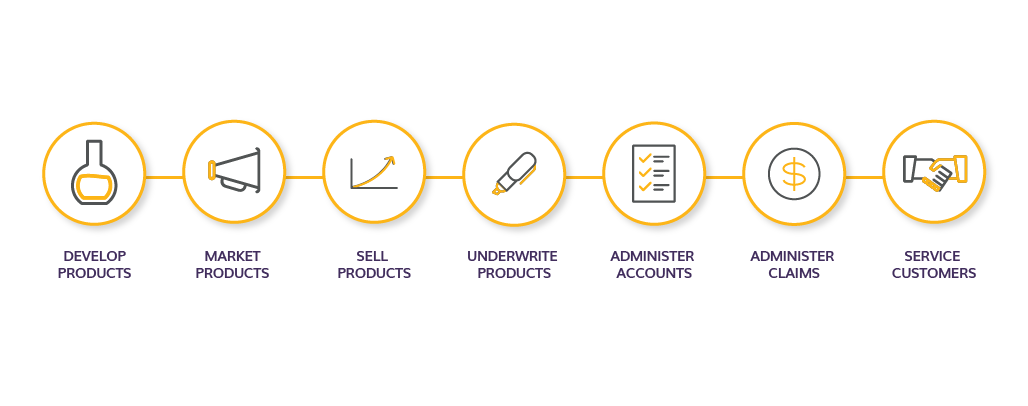Using RPA to improve workflow in the insurance industry
Robotic Process Automation (RPA) provides an opportunity to allow businesses to quickly and efficiently reduce cost, gain efficiencies, and increase their stakeholder satisfaction.
RPA offers many bonuses for companies that primarily operate on information. In these businesses, accurate information is required to be productive and successful, for example, insurance companies. Data comes in many shapes and sizes and flows into a carrier from agents, customers, vendors, regulatory agencies, and from other sources. Applying data from specific locations to drive and route new business, underwriting, claims, billing, and services to significantly increase value. Information is the primary driver in creating value for insurance agencies, as can be seen in their value chain.

How Robotic Process Automation (RPA) works
At its core, RPA works as a software technology that replicates the actions of humans by capturing and interpreting them. Though it may seem like a simple concept, current generation RPA can support and enhance employees in multiple fields. Such as data manipulation, communication, transaction processing, responding, and system communication. As a result, it excels in organizations that use people for knowledge-process work and data entry, virtually any workload that has the following traits:
- Repeatable
- Routine
- Time-sensitive
- Rule-based
- Error-prone
RPA can perform a variety of tasks; these include simple one task processes up to complex multi-step problems. Most bots fall into one of two categories, attended and unattended. Attended bots require employees to initiate them to perform a task. However, unattended bots will wait for work to appear then immediately process it. A great many problems can be solved with RPA. RPA is not a replacement for employees; however, it is a way for employees to add value to their workflow, and may also increase job satisfaction.
Consequently, this will allow a carrier to increase productivity from its workforce. Additionally, RPA is not a Machine Learning system or an Artificial Intelligence; however, it can be used in unison with these technologies.
Using RPA in your company
Most leading RPA vendors make the installation and creation of RPA software easy. Most RPA toolsets typically offer a visual development environment and a user interface. Meaning that a technical background isn't necessarily required. However having an individual with such technological know-how and design experience will assist in the efficiency, capability, and scalability of this software. It is essential to approach your RPA journey thoughtfully, always think big, start small, and act quickly. Aligning your organization with RPA based on the highest value activities. Also, consider whether RPA is needed to fill gaps or it is needed for any long term strategies. Linking RPA with your strategic efforts is key to success. Some other factors may include training, associate communication, ongoing maintenance, support, COE establishment, and vendor review and selection.
Talk with one of our consultants
We're motivated and talented thinkers. Tell us the issue, and we'll find the solution.
© 2025 Nuerex.
